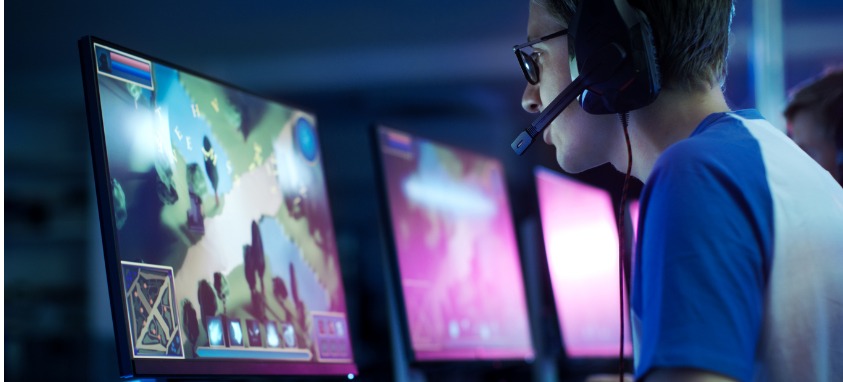eSports may not be new—did you know that the first game was released in 1960? But this exciting form of entertainment is emerging as a big business in the gaming world. Robert Rippee, director of the new Hospitality Innovation Lab at University of Nevada, Las Vegas’ International Gaming Institute, spoke with Smart Meetings in a webinar about the opportunities this trend brings for planners. Read on to learn about the history of gaming and its connection to the meetings industry.
A New Way of Thinking
While it may appear that video games are a recent innovation, pixel play has been around for decades. Spacewar! was the first popular game in the 1960s, enticing players to adopt gamepads, the precursers to joysticks. The strategy was radically different than that for board games and was distributed through colleges and research centers. While it’s now considered extremely outdated, the program for PDP-1 computers is now heralded as the birth of modern video games. It brought popular attention to the industry and piqued people’s curiosity.
Pong was the next big hit. Nolan Bushnell was responsible for the release of the game—a virtual table tennis exercise. At this point, games were mostly available at arcades. Bushnell realized this and created Atari, which allowed gamers to play at home. It proved successful and what started as a couple-hundred-dollar venture soon erupted into a multi-million-dollar success.
In the early 1980s, the market exploded. However, demand quickly declined due to an overabundance of games. In 1985, Nintendo Entertainment System released the first generation of 8-bit gaming—think Super Mario Brothers—into homes. Sega Genesis followed suit with their a 16-bit console in 1989. These games were an entry into the modern-gaming world, with fun characters and new storylines to follow.
eSports is Born
Rippee defines eSports as “competitive playing of multiplayer video games.” Capitalizing on the popularity of eSports, major publishers, such as Blizzard and Microsoft Studios, began hosting tournaments independently. In 1995, Microsoft’s Judgement Day offered $10,000 in accessories to the winner. The first large tournament was Red Annihilation Quake, which brought in 2,000 participants. The concept of multi-player gaming quickly escalated in popularity, especially when it came to fighter games.
Millennials were the first generation to grow up with computers in class rooms, making the adoption of skill-based games natural. That technical immersion has spawned a massive industry that has crossed over to the physical real estate space. Rippee estimated current eSports market revenue worldwide at more than $900 million, and it’s projected to reach more than $1 billion by 2021. Space for these games has grown significantly—some games can fill arenas, with tickets selling out within a matter of minutes.
Hotels in Las Vegas are buying into the trend big time; MGM Resorts’ Luxor offers 35,000 sq. ft. of gaming space, while Caesar’s Rio features The Wall, which injects a lounge vibe in competitions. It’s evident: eSports are becoming prevalent, and if you don’t keep up, you’ll experience a disconnect from—and potentially miss out on—younger attendees at events.
The Meeting Connection
eSports adds a modern, competitive edge to team building. Creating a personal tournament can build competitive camaraderie within companies. Destinations and planners can stay current by incorporating these games into their events; eSports is a form of entertainment, an alternative to live music for the right group.
It’s also important to recognize the changing demographic. No longer do you need to differentiate between Pacman and Ms. Pacman—men and women of all ages are discovering the exciting world of virtual communities.
In fact, they have become such a big business that organizing them is a new career option. Meeting planners can contribute to these programs by managing contract negotiation, site selection, and F&B to truly elevate the experience. Nobody wants a repeat of Tanacon—planners are crucial when it comes to a clean execution.




